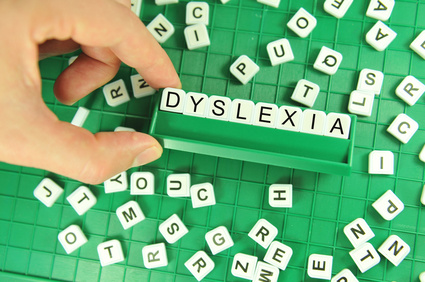 Success in school is primarily dependent on a child’s ability to process information visually. With classroom learning estimated to be 75-90% visual, problems with vision can seriously hinder learning.
Success in school is primarily dependent on a child’s ability to process information visually. With classroom learning estimated to be 75-90% visual, problems with vision can seriously hinder learning.
There are 17 visual skills needed for reading and learning. Seeing the 20/20 line correctly is only one of those skills. Since further evaluation is commonly disregarded, 20% of American children spend their days trying to learn despite undiagnosed vision problems.
With learning and vision so closely linked, yet incomplete testing so widespread, vision problems frequently get mistaken for learning disabilities, ADHD or dyslexia. At least 40% of children with learning disabilities have vision problems.
One well-documented case of this occurred in 2012 in Washington, DC. As an infant, Emmelyn Roettger did not play normally with toys or react properly in many situations. She was analyzed by physicians as likely autistic with developmental delays expected. Refusing this diagnosis, Emmelyn’s parents took her for a vision evaluation and discovered she had farsightedness (poor near vision) and amblyopia (lazy eye). She needed glasses to see near objects and vision therapy to train both eyes to work together. Immediately her world opened up, and at age 2 years 11 months, Emmelyn was accepted into the high-IQ society of MENSA with an IQ of 135. From learning disabled to simply a vision problem – Emmelyn’s life was saved because her parents sought a proper vision evaluation.
Poor grades, disliking school, hyperactivity, a short attention span, avoidance of homework or taking an unusually long time to complete it – are all key warning signs of possible visual problems. Parents and educators often erroneously believe this behavior signals a learning disability.
Correctable vision problems which can be mistaken for learning disabilities include strabismus (crossed or misaligned eyes), amblyopia (lazy eye) and convergence insufficiency (difficulty with near focusing), as well as a host of other eye issues. Resulting problems occur in many areas such as focusing, comprehension, memory, tracking words, fatigue, attention span, depth perception, hand-eye coordination and eye teamwork. Difficulties can lead to the incorrect assumption of a learning disability.
ADHD is one of the most frequently misdiagnosed disabilities, because certain visual problems cause the same behavioral patterns and symptoms. See our previous post for more information.
Dyslexia is a learning disorder primarily characterized by reversal of letters in reading and writing. Many people go through their entire lives suffering with this condition, not knowing it is almost always a visual spatial awareness issue instead and can be treated with vision therapy.
If you have a child suspected of having a learning disability, ADHD, or dyslexia, the first step is to schedule a developmental vision evaluation with a developmental optometrist. If a vision problem is discovered to be the source of symptoms instead of a disability, your child is on his way to a better life.
Depending on the diagnosis, a vision therapy program would be designed specifically for the child’s needs, generally using balls and other fun objects, computer games, sports activities, lenses and prisms for exercises to strengthen and train the eyes to work together properly. Light therapy may be used in conjunction with vision therapy to help prepare the eyes to relax and be trained.
Your child may not have to struggle through school branded as “learning disabled”. He may have a completely treatable vision problem. Please let us evaluate him and help you make the best decision for his future. Adults can be evaluated and treated as well.
For more information or to schedule a developmental vision evaluation, please give us a call today!
The week of Oct. 14 is Dyslexia Awareness Week. People suffering from dyslexia often see and write words with letters transposed or words omitted. Ex: Some wodrs look cofnusing to hwen I try read htem.
Dyslexia symptoms are commonly caused by a visual spatial awareness disorder. The good news is this condition is treatable with vision therapy! You do not have to live with these symptoms all your life. Contact us for more information or to schedule a developmental vision exam to evaluate your situation.
CHILDREN’S SYMPTOMS OF DYSLEXIA include:
- Slow speech development
- Confusion of left and right
- Difficulty following instructions
- Slow reader, hesitant reading aloud; may lose place, read the same line twice or miss a line
- Difficulty remembering sequential information, such as a telephone number, multiplication tables, the alphabet, days of week or months of year
- Confusion with similar letters or words – m/w, n/u, p/q, b/d; of/off, beard/bread, horse/house
- Problems with long words – Unable to break down into syllables or misses syllables
- Poor comprehension skills
- Letter transpositions – Persistent b-d or p-q reversals, etc.
- Poor handwriting; untidy work – Crossing out with repeated attempts to correct spelling.
- Fails to keep to lines or margins
- Omits punctuation; poor grammar
- Writes phonetically – Such as eny for any; whin for when
- Confuses homophones & diagraphs: Were and where; beleave for believe
- Fatigue when reading
ADULT SYMPTOMS OF DYSLEXIA include:
- May hide reading problems
- Spells poorly or relies on others to correct spelling
- Avoids writing; may not be able to write
- Often very competent in oral language
- Relies on memory; may have an excellent memory
- Has “good people” skills
- Spatially-talented professions may include architects, artists, engineers, designers, mathematicians and surgeons
- May be very good at “reading” people (intuitive)
- Often works below intellectual capacity
- Difficulty with planning, organization and management of time, materials and tasks
If you or your child are having any of these issues, don’t hesitate to contact our office today!